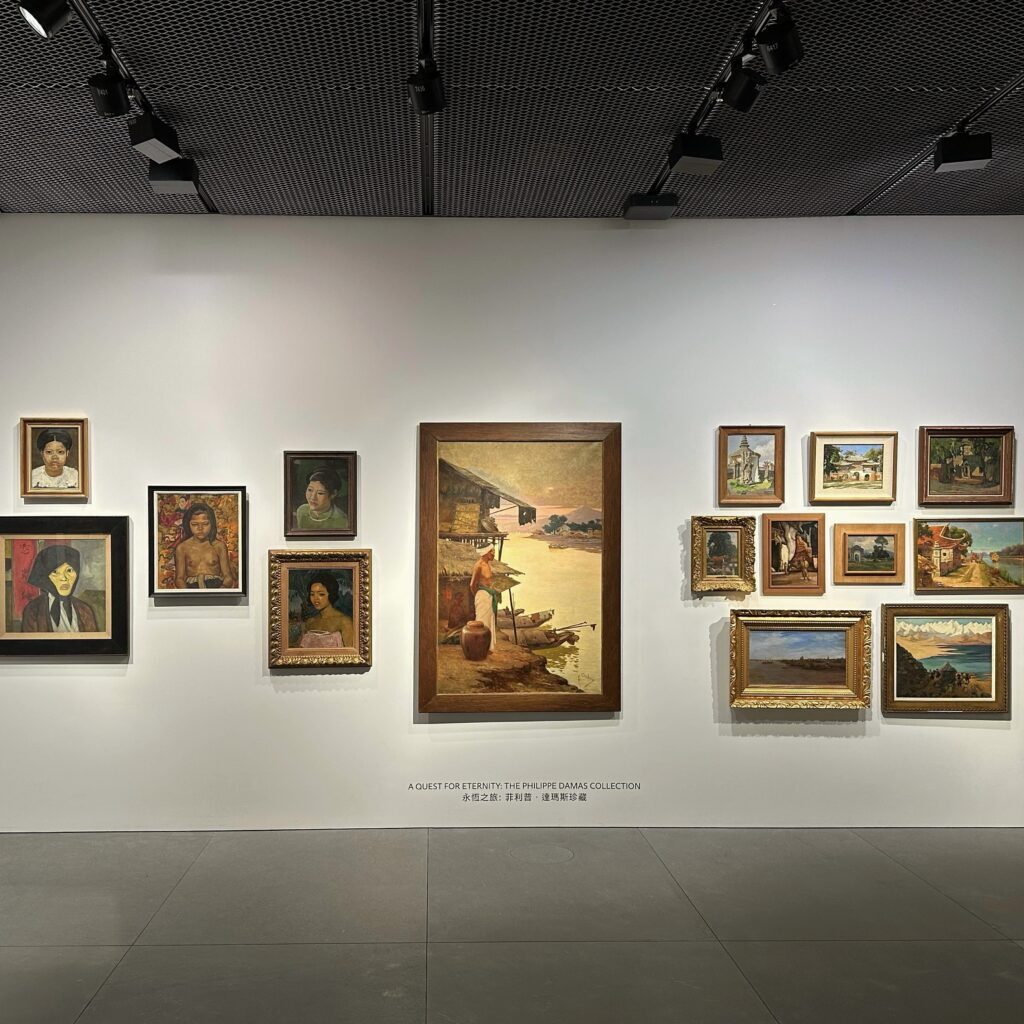The lightly nuanced background with its discreet floral decoration, and the frame executed by the artist with its barely sketched flower and scroll motifs in neutral tones, emphasize the colourful warmth of the central group.
The characters display a drastic verticality, amplified by the format of the work and bound by the similar tones of the mother's headdress at the top and the little boy’s pants at the bottom. The black inks of the hair form a triangle, pointing upwards like an armature. The inverted V-shaped feet of both children at the bottom left and right support the edifice.
A mother-trunk and children-branch-roots. This is how Mai Thu depicts this family. Not 5 individuals assembled together, but 5 complementary personalities that reveal themselves to be additional because the painter suggests, the family group does not dissolve the identity of each individual, but rather enriches it.
The clothing is the classic dress of the Tonkinese 'good society' of which Mai Thu is born. Witness the mother's ao dai and headdress, and the children's simple yet refined clothes. Note the comfortable shawl that was supposed to wrap the baby, and which the mother has moved aside to better present her child.
The artist paints a bouquet of sensibilities expressed by the facial expressions and the positions of the hands.
The faces: the mother's tender, attentive face, her right hand securing the child's position while her left hand, masked, carries him, wearing the shawl that swaddled him. The observant face of the child in her arms. The 3 children's faces—left to right, mischievous, questioning and scrutinizing—are specified by the positions of their arms: successively, firmly crossed, somewhat fearfully embracing their neighbour, swaying, hands wisely clasped.
Once again, Mai Thu praises the mother: the mother who gives life, educates, nourishes and protects with strength and discretion. It is also a trust in children, a bet on the future that he expresses: these children he always subtly describes (Christie's Hong Kong, May 28, 2023, lot 58). Throughout his work, Mai Thu seems to make Victor Hugo's verse his own: ‘’L'enfant c'est un feu pur dont la chaleur caresse’(A child is a pure fire caressed by warmth) (V. Hugo, quoted from Mères, l'enfant qui joue à votre seuil joyeux, Les Rayons et les Ombres, 1840, n.p.).
These children: playful boys, a poised girl, like a relay for their mother.
This painting is an ode to her, and Mai Thu almost turns her into a secular Quân Âm ('provider of children').
Like a mirror tribute to the Bodhisattva and to this secular mother.
Not to the father.
In Mai Thu's work, it's easy to see that the representation of men is in the extreme minority.
Like a lack of confidence.
Above all, it's a contestation of Confucianism, which in fact subordinates women to men. A Confucianism that Mai Thu, like all Vietnamese painters of his generation, refuted, and from which he would make symbolic quotations in his paintings.
With subtlety and devotion. And with immense talent.
Jean-François Hubert
Senior expert, Art of Vietnam













